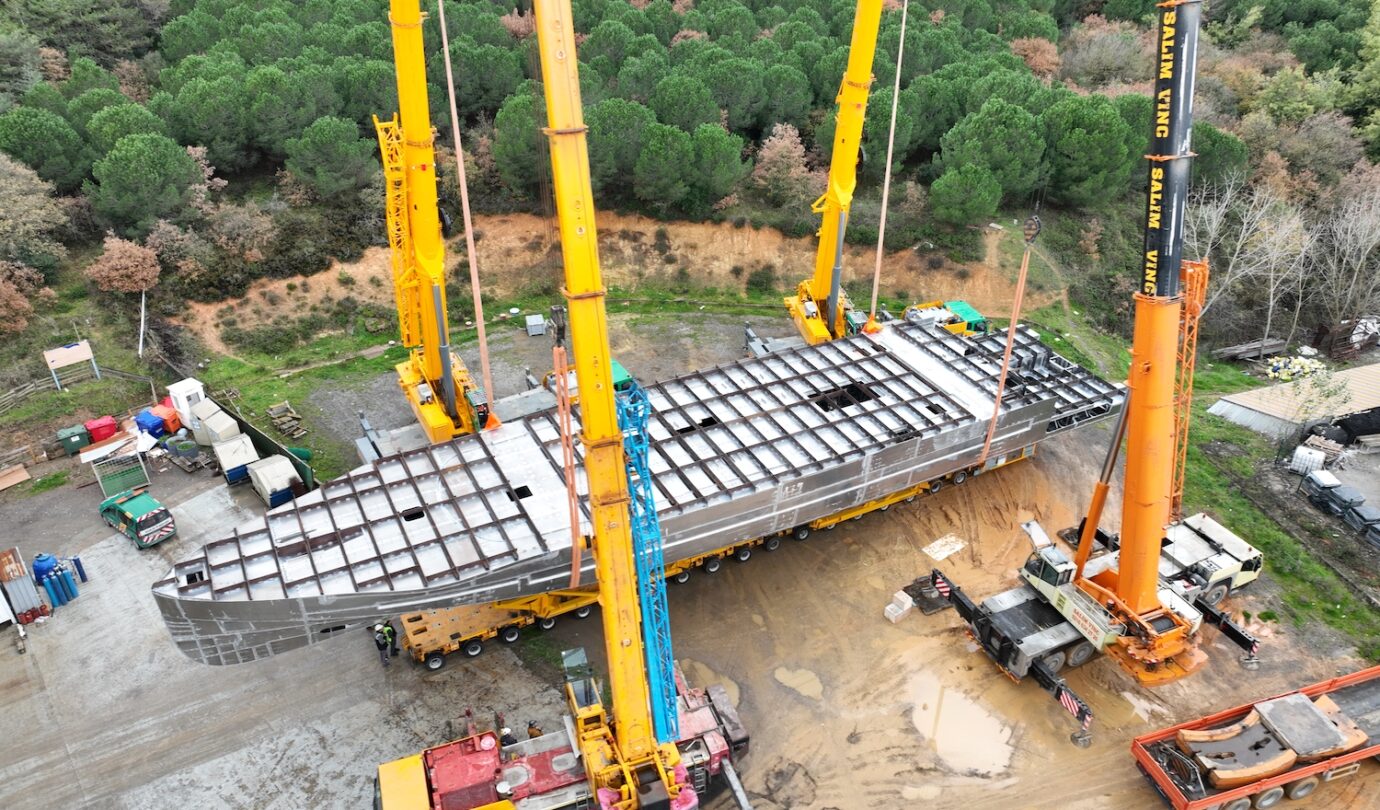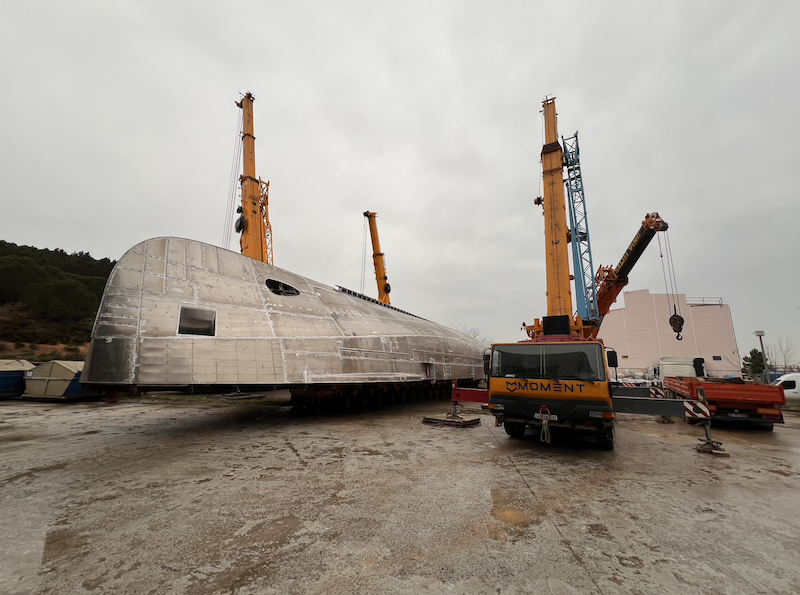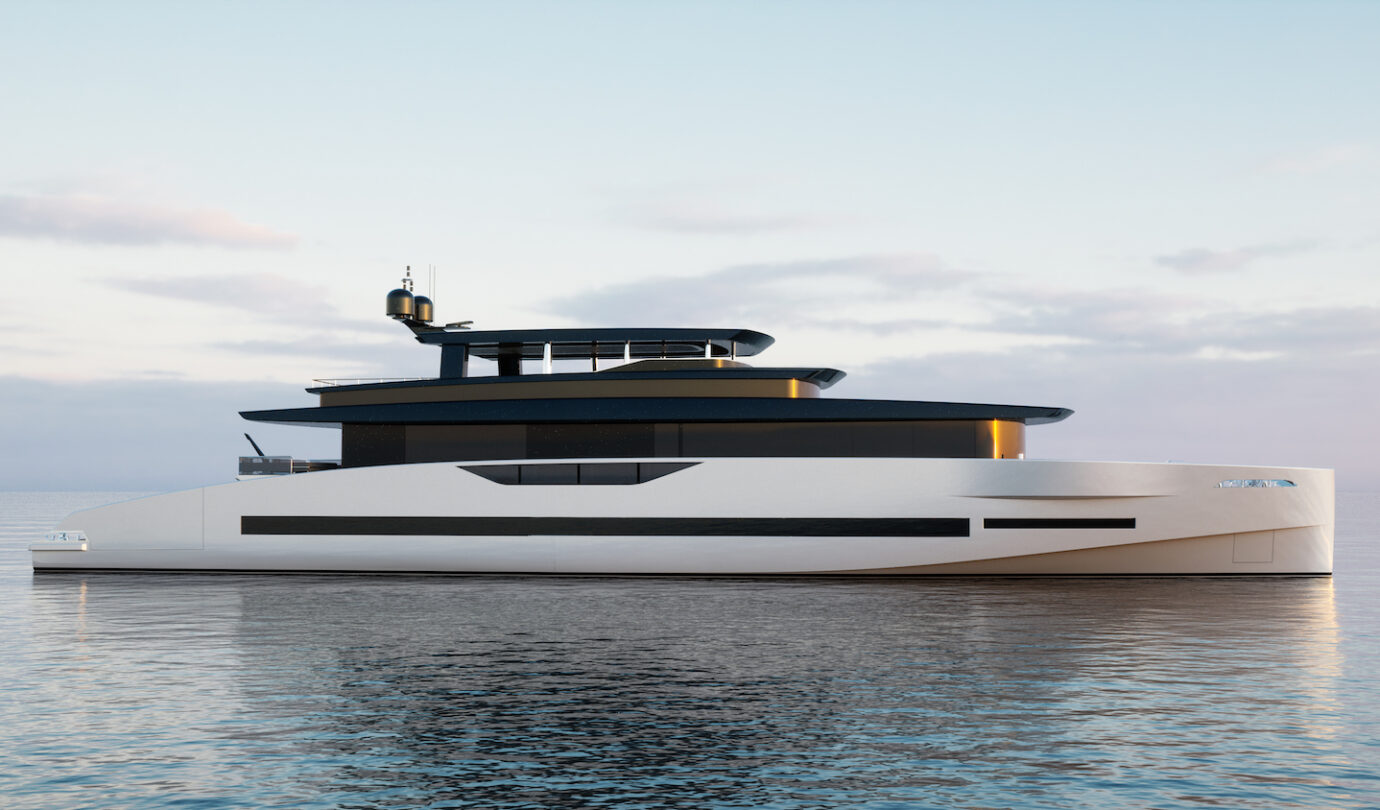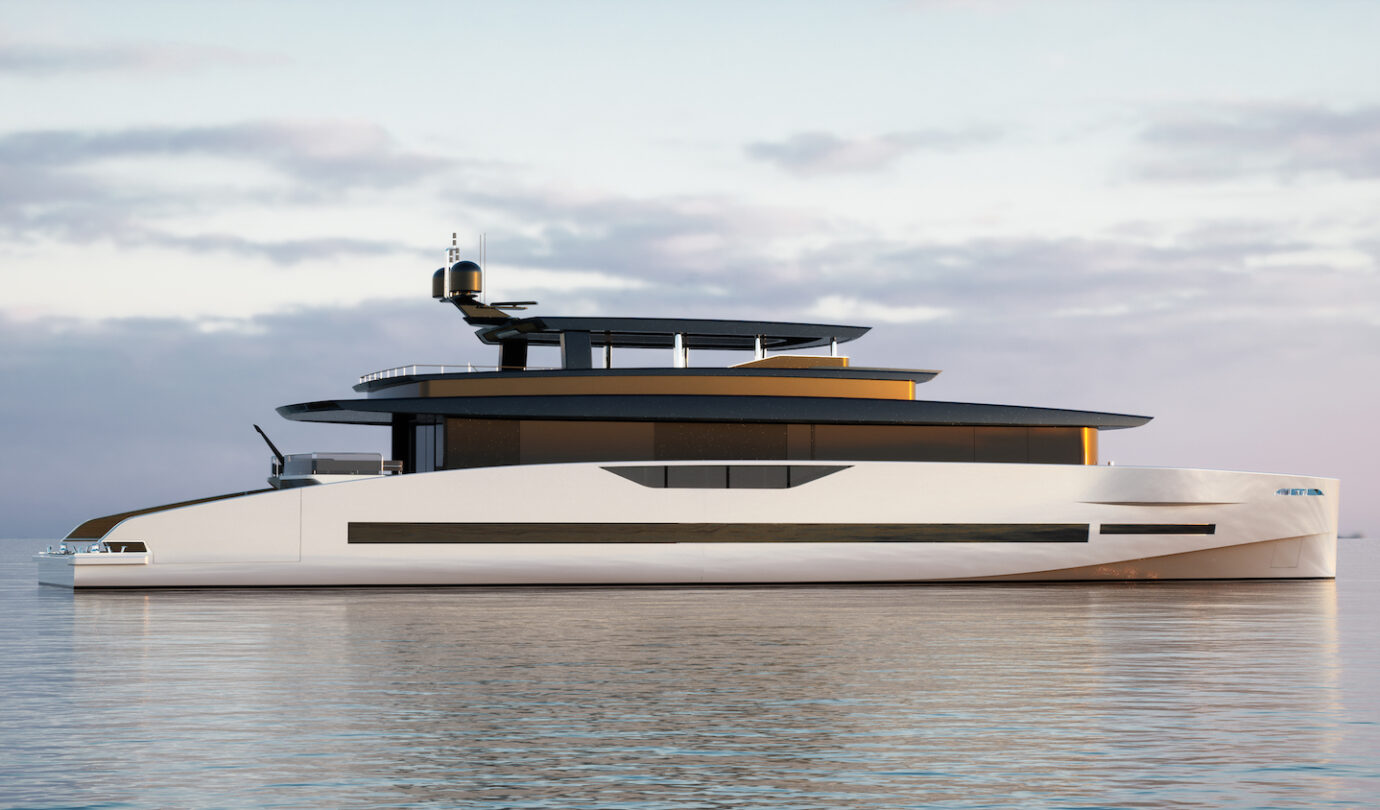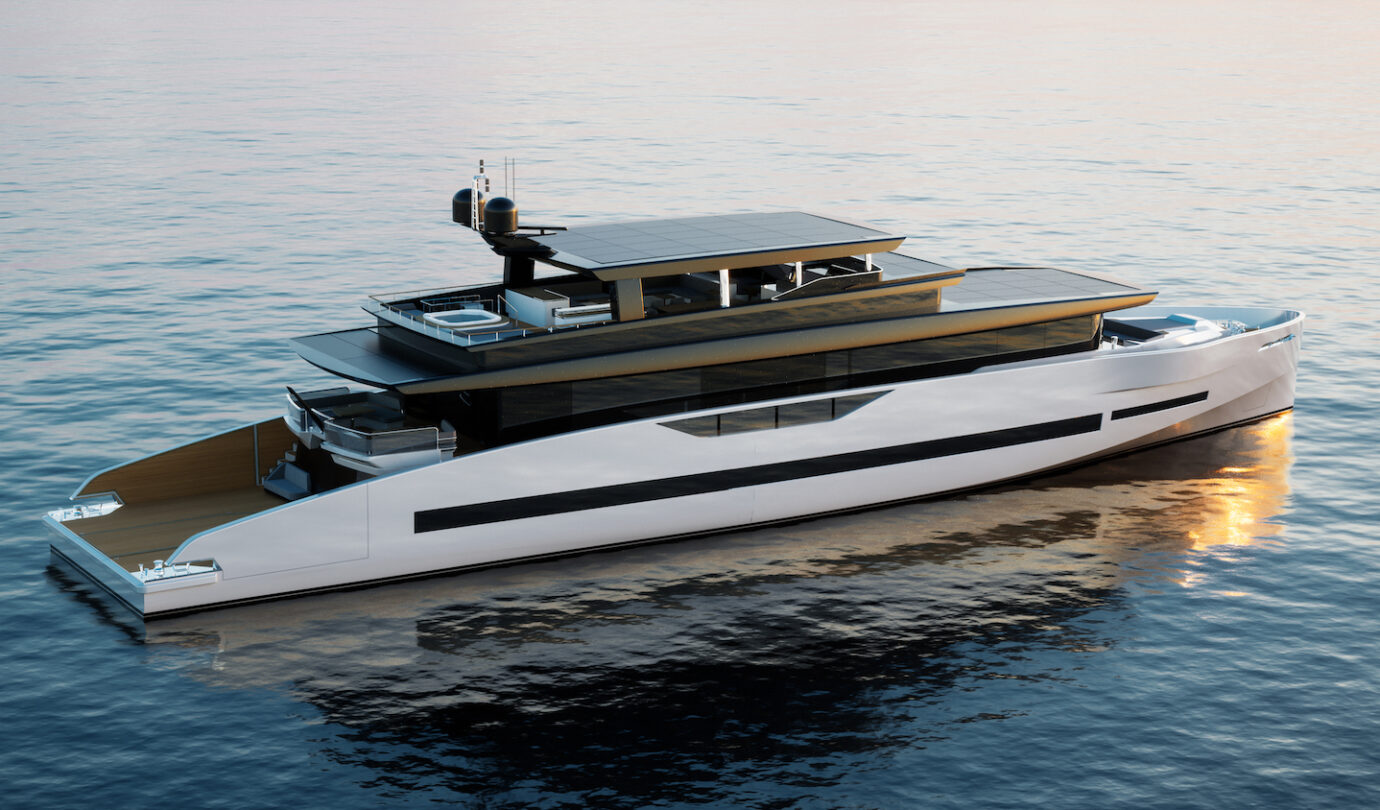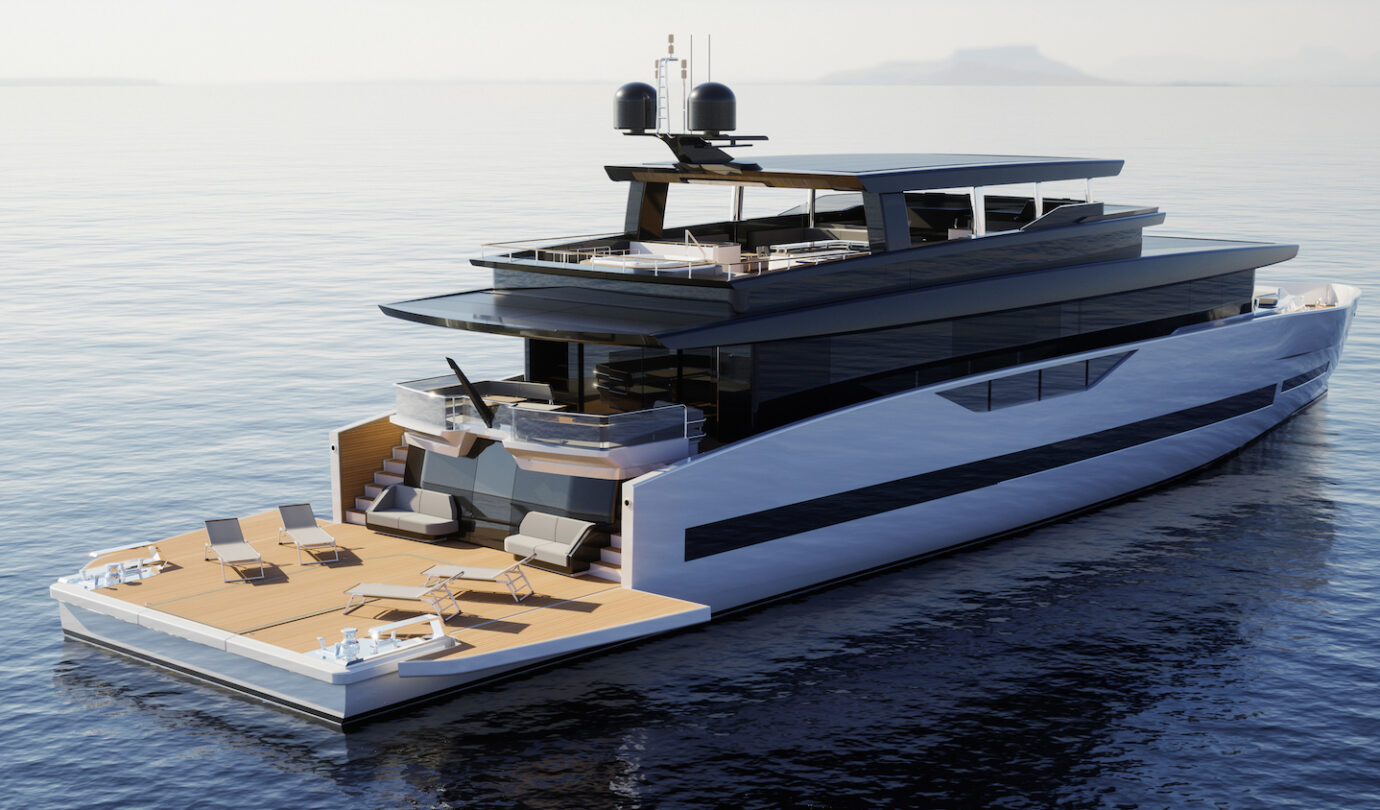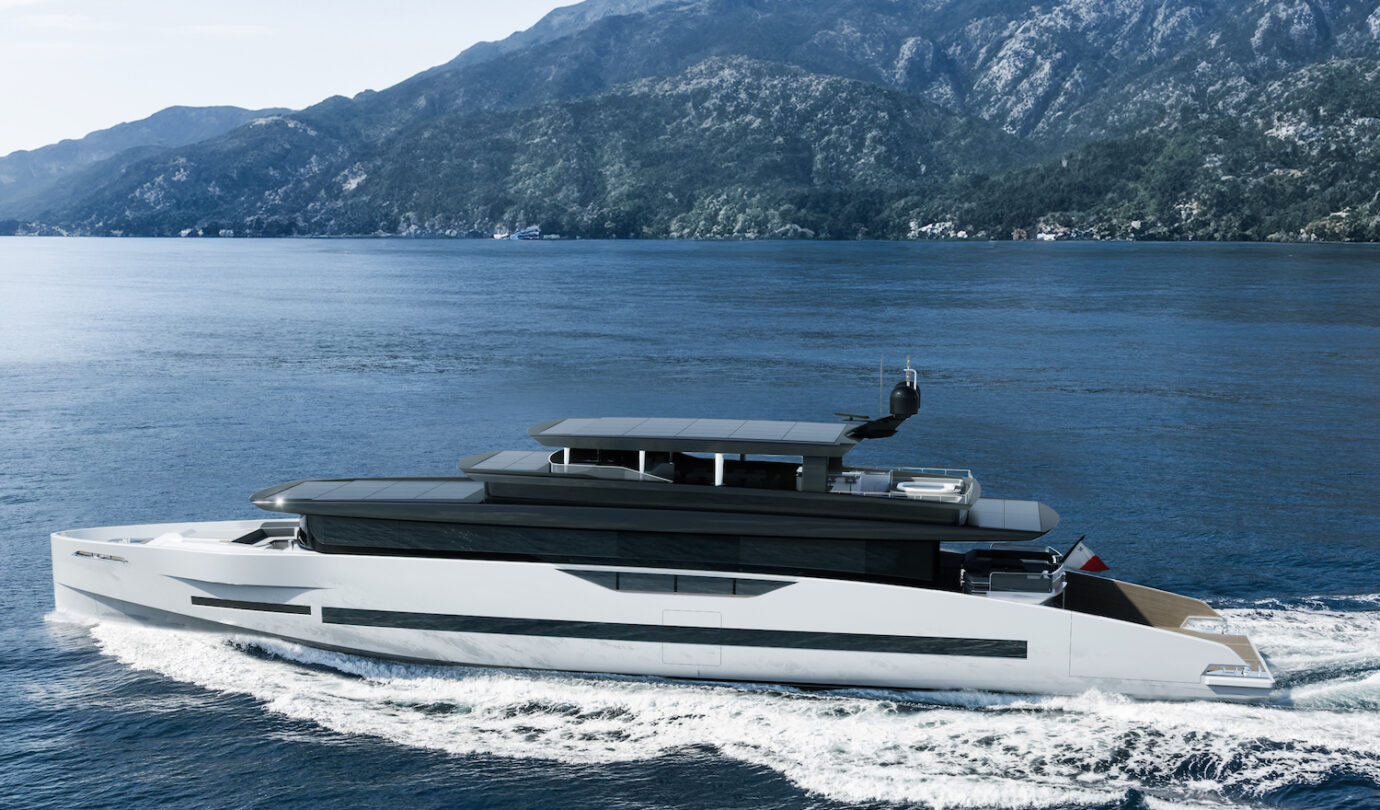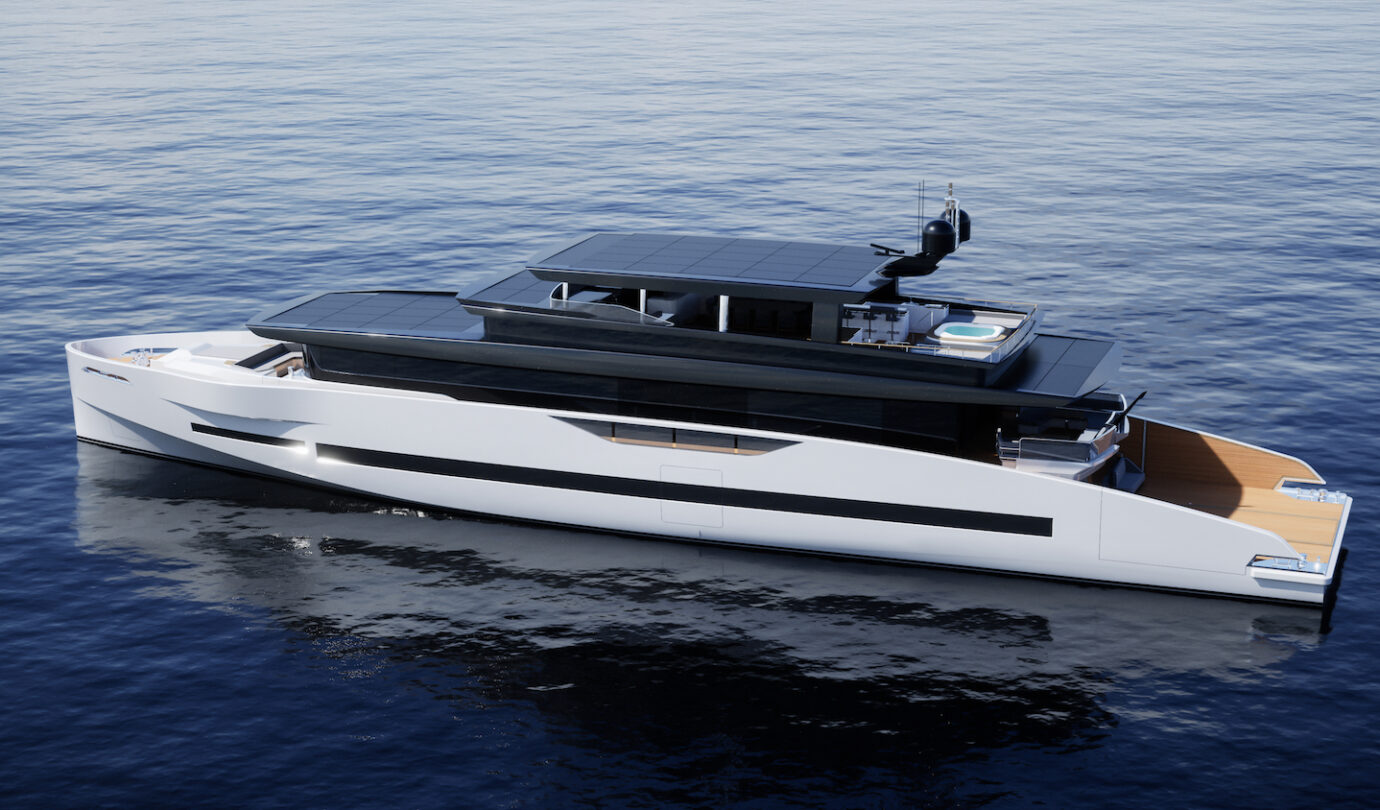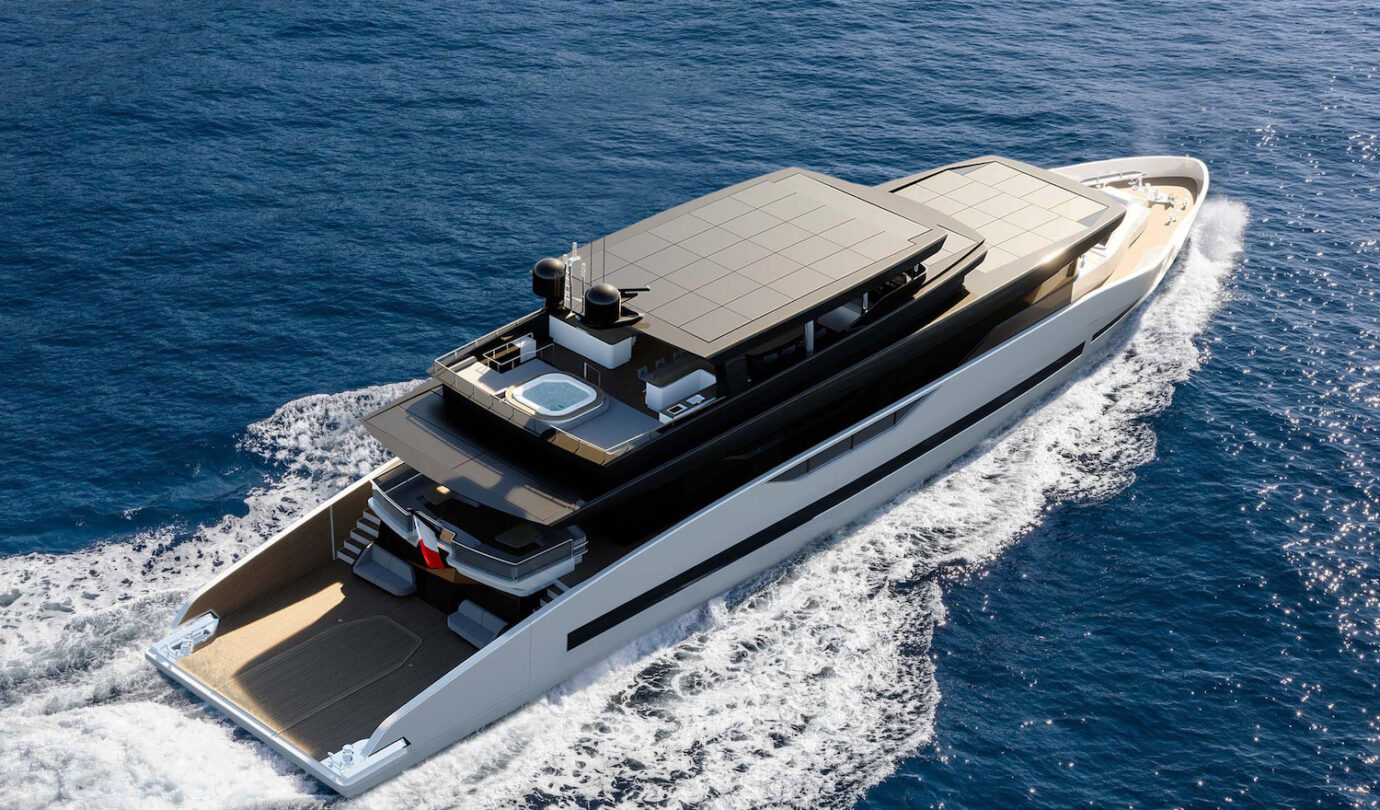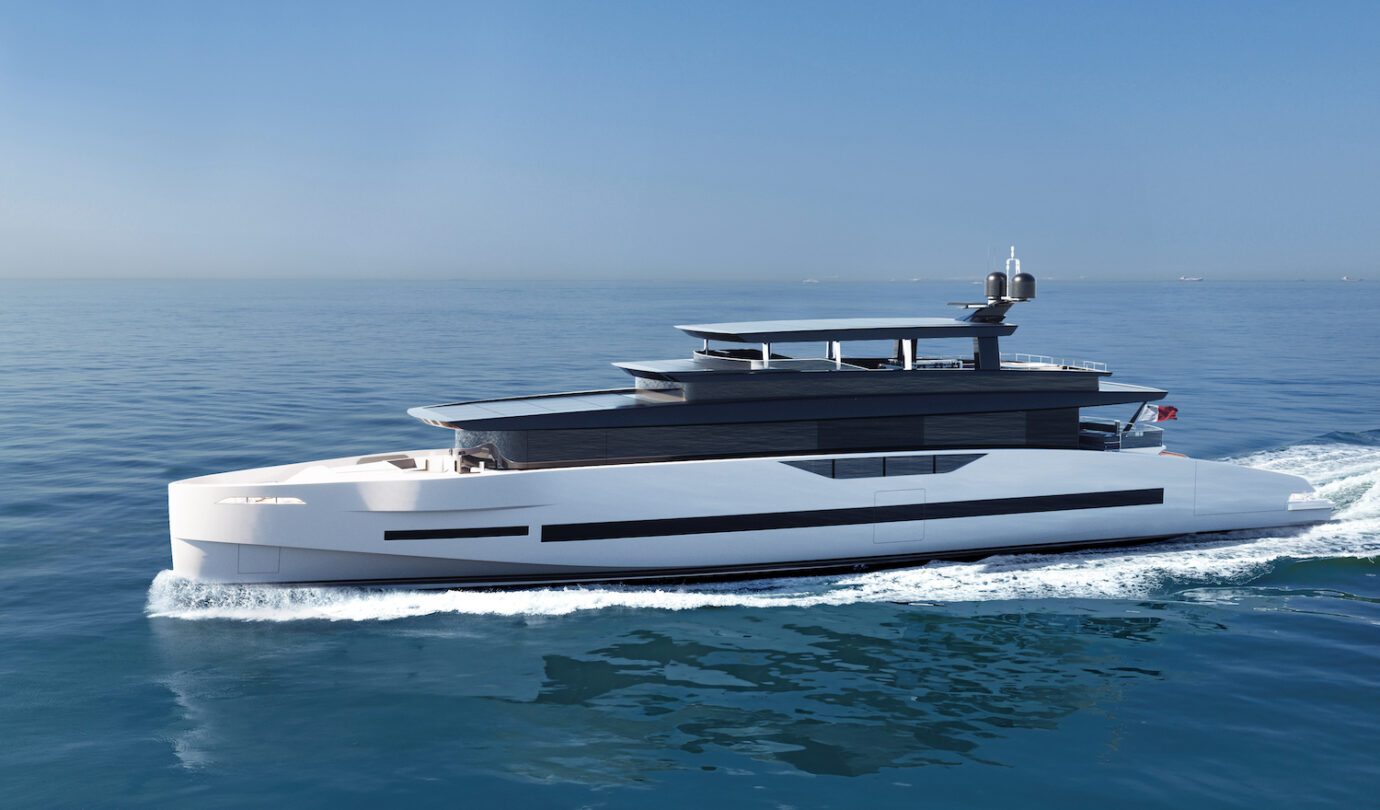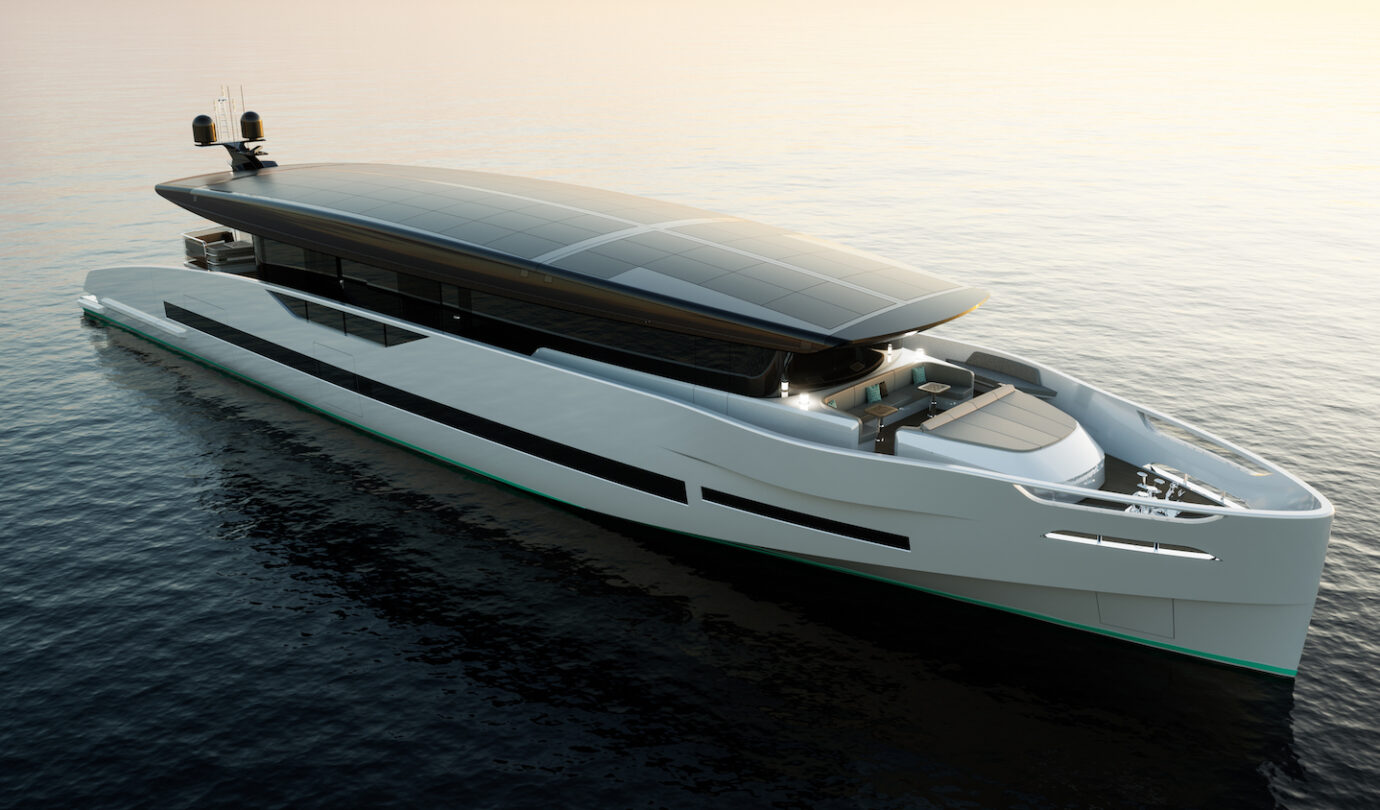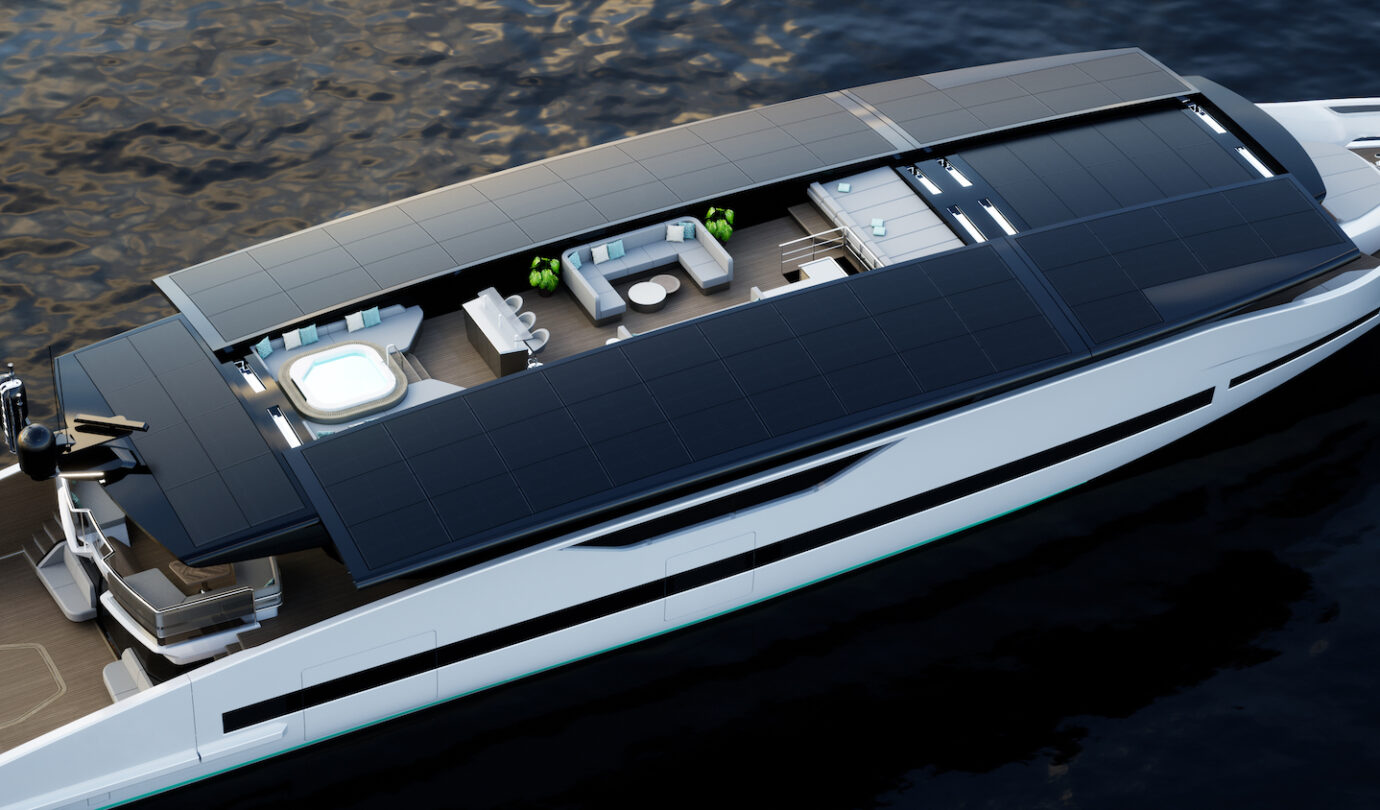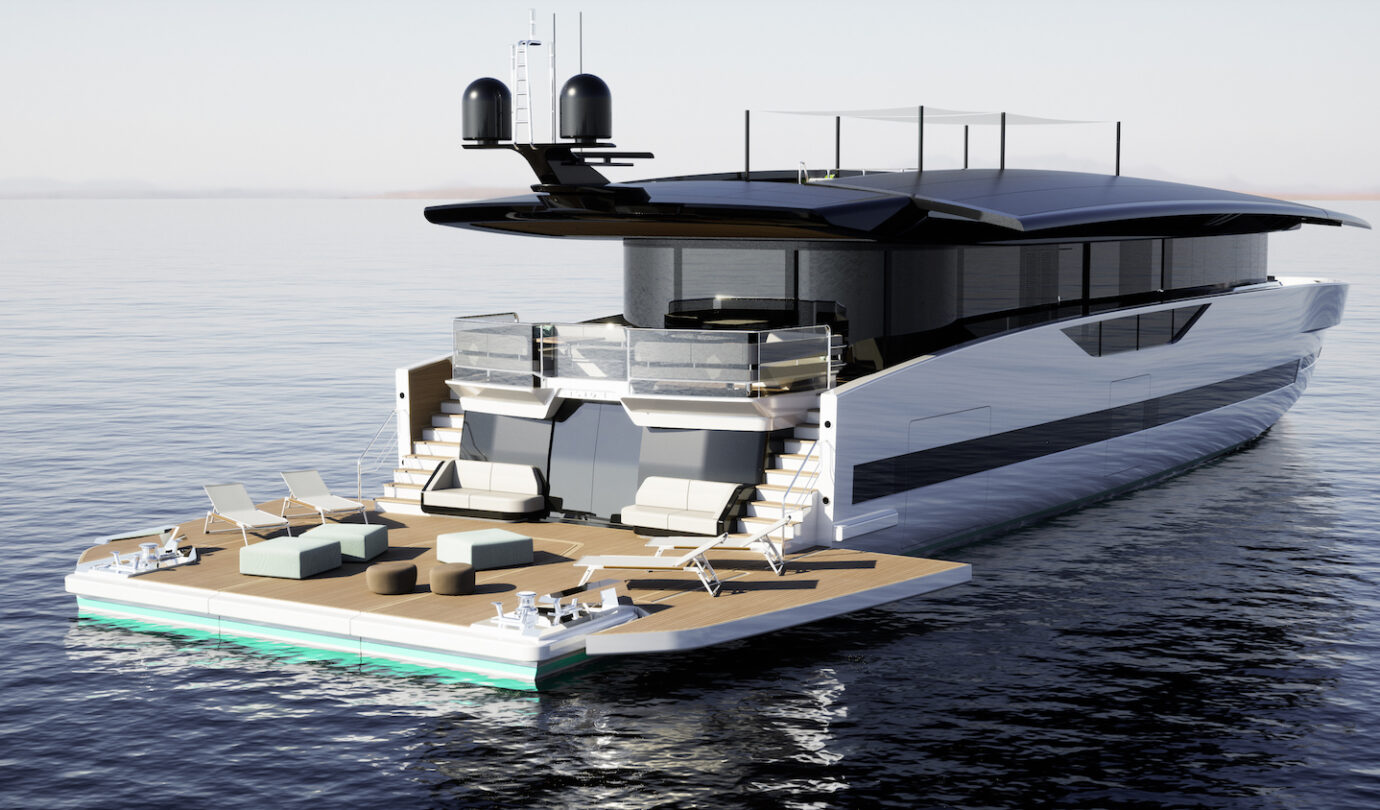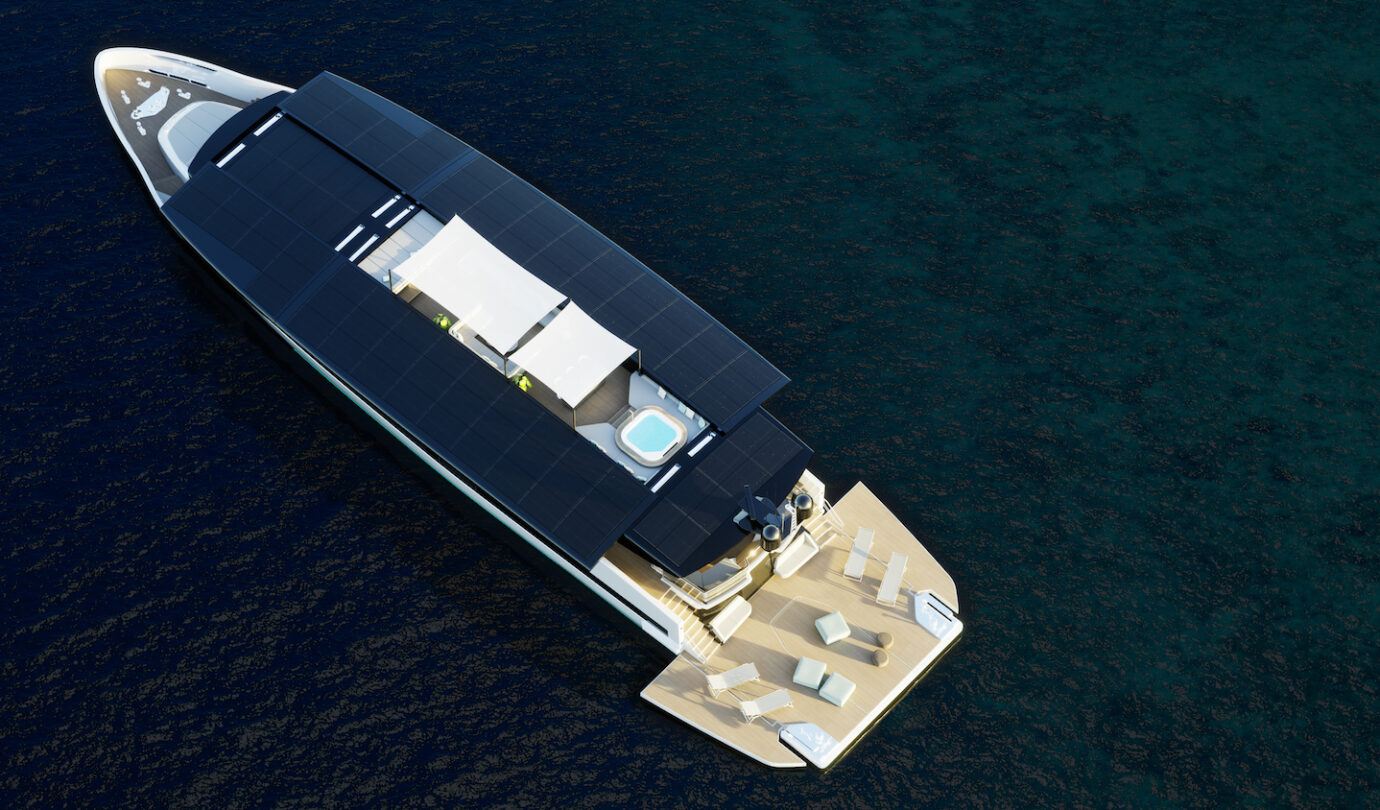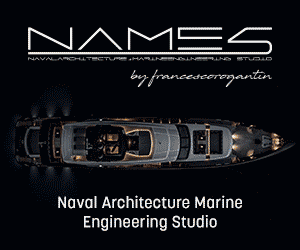The founder Names Studio, talks to DN: “The GX 42 redefines the confines of sustainable luxury”
Our interview with Francesco Rogantin, founder of Studio Names, as we talk about the revolutionary design of GX Superyachts
Our interview with Francesco Rogantin, founder of Studio Names, as we talk about the revolutionary design of GX Superyachts
The first model of the 42-metre GX Superyachts is under construction and will be ready in 2026, marking an important evolution for Greenline Yachts, a brand known for its hybrid propulsion and responsible boating. The hu8ll was successfully rotated at the beginning of 2025 and the superstructure is now in position, moving forward on a project that represents a first for the shipyard’s future range, expanding from 24 to 56 metres. With a seductive design and extraordinary comfort, the new GX 42m embodies Greenline’s fundamental principle: technological innovation for sustainability.
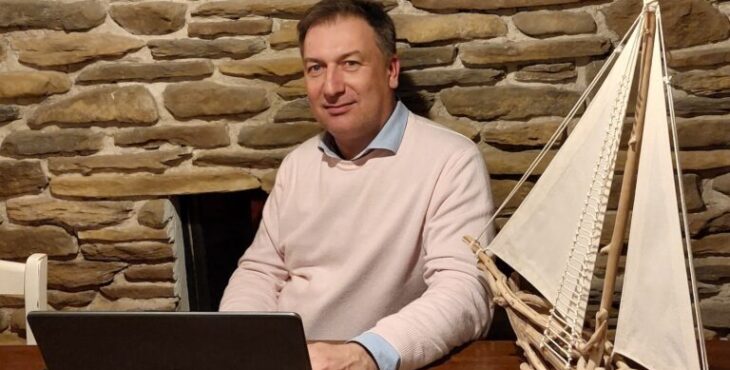
In this interview, Francesco Rogantin, founder of Studio Names and expert in naval architecture and engineering, shares with Daily Nautica the challenges and solutions needed to give life to this futuristic yacht. From technical design to integrating the advanced hybrid system, and choosing eco-compatible materials, the GX 42m redefines the confines of sustainable luxury without forgoing performance and comfort.
How did the GX 42m project begin?
For the Greenline GX 42 metre we worked in a structured and collaborative manner, thanks to an expert team that includes, in addition to Names and Greenline, Andrea Armas, a naval architect with a decade of experience, as the owner representative, and nominated for this project as a consultant to the board of directors, designer Marco Casali, who designed the interior and exterior body, and the Ses Yachts shipyard, our partner for building the unit. It all started with a preliminary analysis phase, where we concentrated on uniting the need for sustainability and performance with the design of a luxury yacht. After this concept phase, we moved on to technical design. Here the work was quite challenging, because we had to integrate an advanced hybrid propulsion system and the battery pack, without sacrificing any interior space or comfort. The next phase, which is still under way, is construction, where we are following each step and detail, in order to guarantee that the final result is perfectly in line with the vision we shared with Greenline. It is a process that requires a lot of attention, but is helping us create something truly innovative.
What were the biggest challenges and issues?
There were a number of challenges in the project, as is normal when working on such an innovative yacht. One of the main requests was to optimise, as much as possible, energy consumption on board, so it was very important to carry out research on materials and components that would respond to this need. Another was certainly integrating the hybrid system: we had to rethink the entire naval architecture in order to fit in the electric engine, diesel engine, and an advanced battery system. We are talking about around 1 MWh, so quite an impact in bulk and in safety requirements. Another big challenge was keeping the balance between sustainability and luxury. When you design a yacht of this category, the expects a certain level of refinement and high quality materials. The entire team worked together to find eco-compatible solutions that were also aesthetically perfect. Lastly, we had to work on energy efficiency: it was fundamental that we guarantee that the yacht could operate for long periods in electric mode, reducing emissions to a minimum.
What are the key principle that guided the design of the GX 42m?
I would say we had three key principles. The first was certainly sustainability: everything was focused on reducing environmental impact, from the hybrid system down to choosing materials. The second was comfort: we wanted the yacht to be welcoming, functional and luxurious, without compromise. And lastly, technological innovation, which is at the heart of the design. We worked hard to guarantee that each component was cutting edge, in order to provide, not just excellent performance, but also a unique experience for the future owners.
How did using a hybrid system and advanced batteries influence the design?
Using a hybrid system was a determining factor for the naval architecture and engineering. On the one hand it forced us to rethink the layout of the technical spaces: the batteries and control systems take up a lot of space and we had to optimise each area so as not to sacrifice space in the internal layout. On the other, the system also influenced the exterior design, both for the careen and topside: the design had to support optimal aerodynamic and hydrodynamic efficiency, to improve performance both in electric and hybrid mode. It was a stimulating challenge, but we managed to find solutions that united performance and beauty.
What type of materials were chosen to build the yacht and interiors? Did you focus on particularly sustainable or innovative materials?
Yes, absolutely. The choice of material was central to the entire project. For the hull and superstructure we used a light, resistant material, aluminium, which is structurally efficient and reduces overall weight. For the interior, the designer Marco Casali focused on a combination of luxury, sustainable and lightweight materials.


